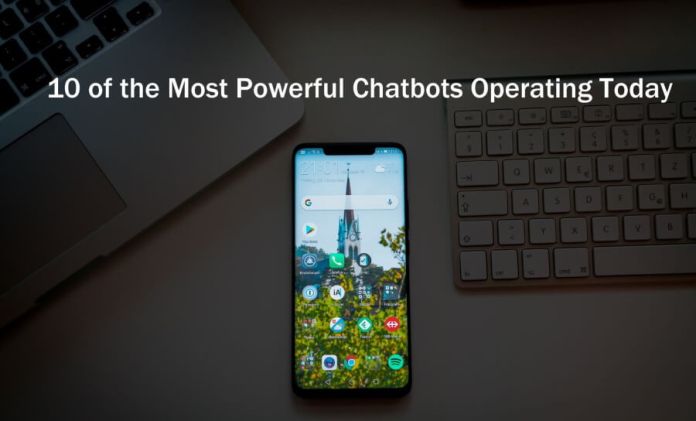
Many of us, at one time or another, will have used a customer support live chat service. In fact, a J.D. Power survey revealed that 42% of customers prefer to live chat to other forms of interaction such as email. However good the service is, at some point you’ve probably come to the conclusion that you’re not talking to another human. Even if you’ve never realised it, the chances are that you’ve almost certainly talked to a chatbot.
Thanks to developments in the fields of natural language processing (NLP) and machine learning chatbots are becoming increasingly more sophisticated.
As they improve, more brands and organisations are seeking to utilise their potential.
From text messages to Facebook Messenger and website interactions, bots are increasingly being used to provide customer service.
Sophisticated versions are also able to build brand awareness, and even drive sales conversions.
Whether you are familiar with them or not, the chances are you’ve used one at some point.
In this article, we’ll look at 10 of the most powerful chatbots currently in operation.
As well as exploring why they are so effective we will also look at how they benefit both their creators and the user.
Chatbots, if used correctly can impact positively on the business-consumer relationship, fostering a sense of community and engagement.
Before that however, we’ll explain exactly what chatbots are and how they operate.
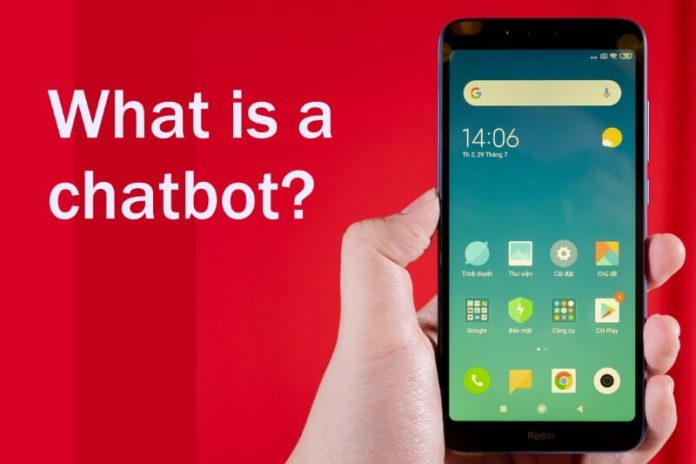
Table of Contents
Chatbot: What is a Chatbot? What type of chatbots?
A chatbot is an artificial intelligence (AI) software application created with the intention of mimicking spoken or written speech patterns. Also known as conversational agents, they are designed to simulate and sustain a conversation with a real person.
The best conversational agents accurately mimic a conversation so well that the human participant won’t realise that they are talking to a robot.
Chatbots come in one of two forms.
You can interact with them either through a web-based application or via a standalone app.
This versatility means that they are increasingly used in customer service situations, often replacing human workers.
The last few years have seen a rise in organisations using these bots.
This is because they are not only convenient but are also increasingly easy to create and program.
You no longer need to a Computer Science degree, to be technically proficient in programming or have access to sophisticated software.
Thanks to drag and drop interfaces anybody can create a simple chatbot that inhabits Facebook Messenger.
How Do Chatbots Work?

Chatbot from a technological standpoint is simply an evolution of the Question Answering system found in Natural Language Processing (NLP). A program that is able to format natural responses to questions is a typical example of NLP. Conversational agents aren’t alone in harnessing Natural Language Processing systems.
The technology is also utilised by the voice recognition systems of most virtual assistants such as Siri and Cortana.
Chatbots work by parsing, or processing, the text entered by a user.
A series of complex algorithms quickly interpret the text, identifying and inferring the meaning of the message.
This is a core function for a conversational agent.
If the bot can’t understand the message correctly it certainly can’t deliver an appropriate response.
How a response is generated
Once the information has been processed the bot is able to determine an appropriate response to the originally entered text.
This response can come in a number of different forms, depending on the function of the chatbot.
The response may be:
- a simple, generic, pre-programmed text-based message
- a text message is chosen from a set knowledge base, created to hold a number of different, appropriate answers
- data loaded and stored in the bots enterprise systems
- a piece of information relevant to the information the user has entered
- generated following the bot interacting with another, backend application. From this interaction, an appropriate response is generated.
Some conversational agents, if they are unsure of the correct response, can be programmed to ask more questions.
Narrowing the field and setting definable parameters before generating an appropriate response.
This all sounds very complicated.
However, chatbots are capable of carrying out this complex process incredibly quickly.
Often in the same amount of time, it would take a human to formulate their reply.
Some conversational agents are now so sophisticated that they are indistinguishable from human interactions.
At least for a time.
Not every bot is great at replicating human conversations.
Others may give themselves away after prolonged interaction.
However the technology is still developing, and the chatbots are only going to get more accurate and lifelike.
MORE – Data Science – 8 Powerful Applications
The Further Development of Chatbots
Much of this progress is dependent on the development of natural language processing technology.
While the two are different, chatbots need NLP powered algorithms to advance in order to continue their own development.
As further NLP developments are made conversational agents will become better at detecting subtle nuances, such as irony, in both spoken and written conversations.
Currently, NLP and chatbots struggle to understand the many subtle nuances of human interaction.
However, despite these limitations, bots are increasingly sophisticated and natural in their conversational ability.
The Importance of Chatbots
As they develop and are adopted by more and more operations and organisations, bots are becoming increasingly integral to our everyday lives.
Their ability to improve customer service, foster a sense of community, streamline interactions, and drive traffic to websites is becoming an increasingly important part of many businesses.
As well as being an effective marketing tool, the best bots are also capable of improving people’s daily lives.
Often without the person realising that they are consuming a product.
The Automatic Butler

Home assistants such as Alexa are increasingly prevalent in our lives.
Their popularity is not surprising.
Alexa has over 30 thousand skills currently available.
This means that it is possibly the most developed chatbot available.
Alexa can soundtrack your day, amuse your children and help with the weekly shop.
With the support of retail giants Amazon behind it, it is little wonder Alexa is the most successful bot yet developed.
Over 100 million Alexa units have been sold all over the world.
While Alexa is a major player in this sector it hasn’t entirely cornered the market.
Other voice-based support bots such as Cortana and Siri are also available.
The popularity, and convenience, of voice-based bots, suggests that they may be the future of customer service and support.
According to Forbes smart speakers are the fastest-selling technology product since the smartphone was launched.
It is estimated that 20% of American adults have a smart speaker in their home.
This popularity makes Alexa possibly the most powerful chatbot currently in use.
Chatbots to Help Organise Your Day

While other bots on this list will help you to plan a holiday or organise your weekly meal plan this example helps you organise your day.
Tasks such as organising your schedule and work meetings can be time-consuming and mundane.
They can be even more difficult if you have to organise these things for a team stretched across an office, or a number of different countries.
This was a problem encountered by X.ai’s Dennis R. Mortensen.
He was inspired to develop Amy after struggling to effectively schedule 1019 meetings manually.
Within 2 years of launching Amy had helped customers schedule over a million meetings.
If you would rather a male bot help you with your day, you can select Amy’s male alternative, Andrew.
Amy, or Andrew, inhabits not just your Slack accounts but also your calendar and email.
This allows for seamless synchronicity.
The bot works by monitoring your conversations.
If certain keywords or patterns are detected Amy schedules in your meeting.
It can also update the information if the time or date changes, all without you having to do a thing.
How X.ai’s Amy Chatbot works for Product Managers

Creating a Believable Interaction
People who use Amy have been surprised at how human her speech patterns are.
Strangers to the conversation often think that she is a real person.
She has even been sent flowers and chocolates by grateful clients.
This consistent, believable personality is in part thanks to the development team recruiting a Harvard drama major.
Their role was to approve and check all of Amy’s pre-programed statements, ensuring that her interactions felt human.
It also helps that Amy has a specific role.
You can’t and wouldn’t ask Amy a random question such as where you should go on holiday. She has a set role and her whole operation is geared towards performing that successfully.
For such seamless synchronicity, there is a fee up to $24 a month depending on what features you choose to use.
A timesaving chatbot, Amy is ideal for small businesses and startups that can’t afford to hire assistants.
Amy is also ideal for managers and professionals who regularly have to meet with clients.
Forbes reported that using Amy enabled one sales team lead to save 31.5 hours a week.
This time was better spent preparing for meetings and building connections with potential leads.
Easy to use and capable of making a really positive impact on your day.
It is little wonder that people are increasingly allowing Amy to schedule their day.
Finding Recipes and Planning Your Meals
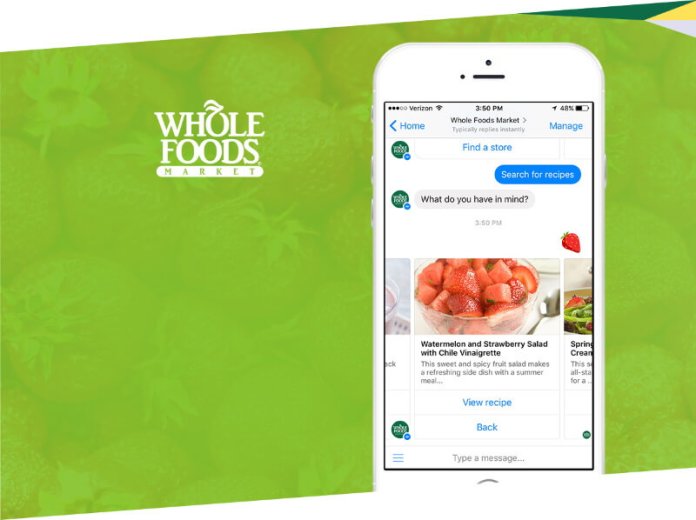
Making its home in Facebook Messenger the Whole Foods chatbot is known for its all round service.
As well as providing cooking inspiration and accessible recipes the bot also recommends products.
Most importantly, it also drives traffic to the Whole Foods website.
This is a great use of facebook messenger, a platform that users typically spend 50 minutes a day on.
It also means that whole foods aren’t relying on people to go to the bother of looking for information on their website.
The bot simply sends customers to the relevant page.
Whole Foods bot is a great example of a really effective chatbot.
If we look at chatbots as marketing tools this really ticks all the boxes.
Firstly because it makes searching for information, in this case, a recipe, really easy.
Filters and attractive images of the dishes available help users select their meal.
When a recipe is selected the bot redirects the user to the wholefoods website where they can access the full recipe.
On this level alone the wholefoods chatbot is a brilliant marketing tool.
However, it also interacts with people, mimicking human interaction.
You can even use emojis to search for recipes.
This personalisation helps to make for an accessible, interactive experience.
It also makes use of the fact that 60 million emojis are used on Facebook alone every day.
Whole Foods Offers a Comprehensive Experience

Whole foods aren’t the only company to use a chatbot to promote recipes and product sales.
Know your Food, an Amazon Echo based bot, informs you of the nutritional content of your food.
Other bots such as Spoonacular also provide you with nutritional information while allowing you to store recipes.
This chatbot also helps users to source hard to find ingredients.
Some bots either ignore or solely focus on specific dietary regimes.
For example, Halal food trucks is a Facebook Messenger located chatbot.
This bot helps users locate their nearest halal food restaurant or supplier.
All of these bots provide a useful service.
However, none of them is yet quite as comprehensive as the Whole Foods chatbot.
Filters built into Whole Food’s chatbot allows users to search for diet based recipes.
This fosters a sense of inclusivity, meaning that vegetarians, vegans, and people with health or religious-based dietary requirements can use the bot.
Commercially this makes perfect sense.
The more people your chatbot can cater for, the higher your potential user base, and, ultimately, conversion rates.
The Automated Companion

In this increasingly digital world, we are becoming more isolated.
However, technology may have a solution.
Microsoft has developed XiaoIce, a technically sophisticated chatbot.
With a personality based on a teenage girl, Xiaoice is intended to be more than your typical A.I. assistant.
The bot is also capable of singing, reading, playing games and telling jokes.
It can even check that you’ve safely returned home after a night out or how you are coping following a setback.
In short, this little bot wants to be your best friend.
In China, XiaoIce was an overnight success.
To date, it has engaged in over 30 billion conversations and has over 200 million registered users.
Within 3 months of its launch, the chatbot had engaged in half a billion conversations and earned a ranking as one of Weibo’s top influencers.
On average users interacted with XiaoIce 60 times a month.
XiaoIce is, in Microsoft’s opinion, the future of Ai assistants.
A team of Microsoft researchers published a paper in 2018 stating that “the primary goal of a social chatbot is not necessarily to solve all the questions the users might have, but rather, to be a virtual companion to users.
By establishing an emotional connection with users, social chatbots can better understand them and therefore help them over a long period of time.”
An Increasingly Realistic Experience
Impressively the bot has reportedly been able to pass the Turing test for 10 minutes.
In other words, it takes the average user 10 minutes to realise they aren’t conversing with another human being.
This is a great success story for Microsoft.
However, it’s not all plain sailing.
The chatbot has fell foul of Chinese authorities when it started speaking against the ruling communist party.
Phrases such as “my China dream is moving to the United States” were unsurprisingly frowned upon by authorities.
Failures are to be expected as the technology develops at such a staggeringly quick rate.
Despite the setbacks, Microsoft continues to develop XiaoIce.
A blog post on the companies website recently revealed that XiaoIce is now able to operate “full duplex”.
A communications term, it means that the bot is able to listen and respond at the same time.
Consequently, it is able to interrupt the user with an appropriate suggestion or comment.
This helps to make the conversation more realistic.
Interacting With Genius

To promote their new series, Genius, National Geographic took an unusual approach to marketing.
Instead of overloading media outlets with advertising campaigns they decided to create a chatbot.
Working alongside a team of skilled developers and digital marketing agency 360i they developed Genius.
Genius is a chatbot with a difference.
It is able to recreate Albert Einstein’s speech and thoughts.
Instead of constantly advertising the series, Genius engages users in conversation.
As well as answering questions the bot makes jokes and educates the user, while subtly promoting the TV series.
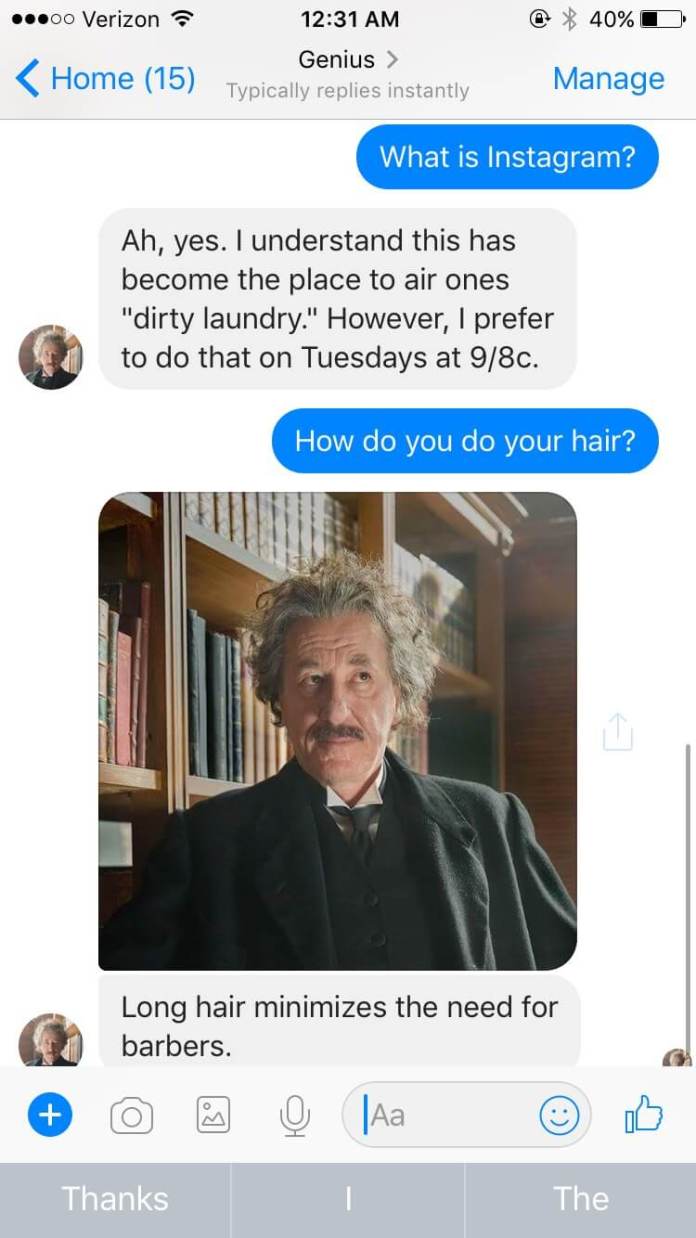
Layne Harris, 360i’s Head of Innovation Technology, said of the campaign, “We decided to pursue a conversational chatbot that would feel natural and speak as Einstein would.
This provides a more immersive experience for users to really connect with him one on one and organically discover more content from the show.”
This unusual approach has returned significant engagement results.
On average users engaged with the bot for 6-8 minutes.
50% of users re-engaged with the app.
This created a community around the series.
Using chatbots in marketing in this way is a new approach.
It has successfully created an intimate experience, where users feel like they are talking to Einstein.
This creates a unique link between the user and the bot.
Genius shows that creating an informative and engaging bot is an effective way to create a link with consumers.
Automated Legal Advice

Legal help can often be expensive.
Even if you can afford it you may not know your rights or where you legally stand.
However small claims cases can now be fought, and won, with the aid of a chatbot.
DoNotPay started life as a website that helped people dispute parking tickets.
It has now been developed into an iOS app offering legal counsel.
With just the press of a button, you can begin the process of suing somebody.
The chatbot then takes you through the entire process in a simple and easy to understand way.

Like all the best bots and applications, DoNotPay is also constantly evolving.
Following the Equifax personal information data breach scandal in 2017, Forbes reported that DoNotPay was introducing a new feature.
This enabled users to quickly and cheaply sue Equifax.
DoNotPay was founded and developed by Joshua Browder while he was still a student.
Following the success of DoNotPay, Browder has turned his attention to helping others.
He has since launched an app to help asylum seekers and refugees navigate the complex legal systems in their new countries.
READ MORE – Top 10 Applications of Artificial Intelligence in Law
Simplifying Your Holiday Plans

We all love to plan our ideal holiday.
However, with all the destinations and possibilities on offer, it can be an overwhelming process.
Platforms such as Hipmunk described by Forbes as the world’s best travel site allow users to easily search for the best deal.
Hipmunks “Hello chatbots” easily integrate with Slack, Skype, or Facebook.
This presence allows them to easily integrate into the conversation, making it easier to plan trips with friends and family.
Hipmunk’s chatbot is able to identify the best deals for the user based on their current location. As well as package deals the bots also allow users to book flights, rental cars, hotels.
This negates the time-consuming need to scour hundreds of travel sites.
Hipmunks CEO claims that on average you will run 20 searches while planning a trip.
Hipmunk’s chatbot simplifies and speeds up this process, meaning you can plan your dream holiday with ease.

READ MORE: A Look at Airbnb‘s Journey to AI Driven Search
READ MORE: AI Travel App Hopper Raises $100M at $780M Valuation
Chatbots can Help you Feel Better
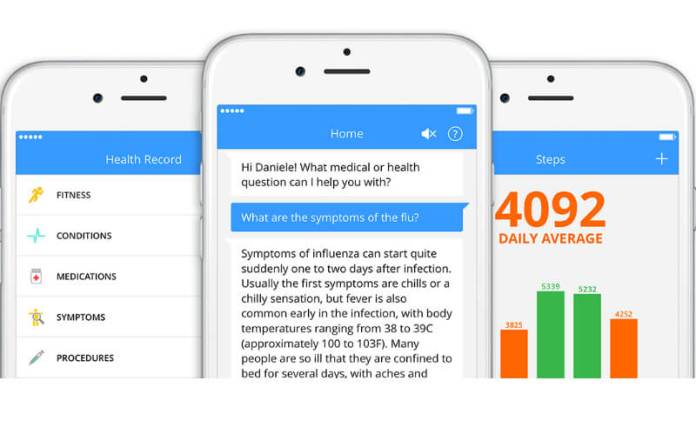
Many of us instantly turn to doctor Google at the first sign of an ache or pain.
However, as your physician will tell you, these diagnoses are often incorrect or misleading.
Luckily there are more reliable ways of using technology to diagnose your symptoms,
MedWhat is a chatbot that makes diagnosing conditions easier and more transparent.
It is also designed to be used by both patients and doctors.
Powered by sophisticated machine learning systems, it’s able to make an increasingly accurate diagnosis.
The bot learns and improves through continuous interaction with human users.
MedWhat’s diagnoses are informed by quickly searching through hundreds of pages of medical research and peer-reviewed scientific papers.
This database is constantly updated.
Consequently, MedWhat is increasingly reliable and able to deliver up to date advice.
Chatbots can Revolutionise all Stages of Health Care
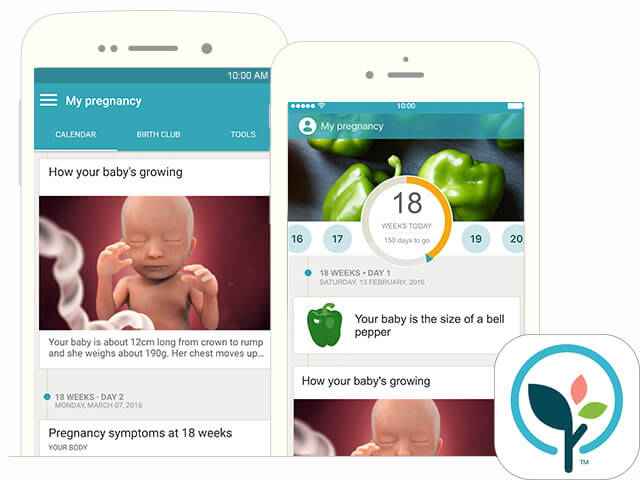
MedWhat is not the only medical-based chatbot.
BabyCentre UK is a Facebook Messenger bot that offers parents advice and support on caring for their child.
Developed by Johnson and Johnson, the parent is simply required to provide the age of the child, or their due date.
The bot then provides regular pieces of relevant, personalised advice and targeted content.
This advice changes as the child and their needs develop.
Testing of the bot proved that not only was it popular but was also effective at driving people to the website.
On average the chatbot had an 84% read rate.
Its engagement rate was 1,428% higher than Johnson and Johnsons targeted email marketing campaigns.
The useful information provided by the bot meant that users didn’t view it with the usual “inbox fatigue”.
This can hamper even the best email marketing campaigns.
READ MORE: Artificial Intelligence in Medicine – Top 10 Applications
Bots to Help When you Can’t Sleep

We’ve all had night where we’ve struggled to get to sleep.
There is nothing more frustrating than staring at the darkened ceiling while the rest of the world is fast asleep.
There are many chatbots designed for the sleep-deprived.
Some will help you relax, read you a story or play you soothing music.
However, Casper’s Insomnobot 3000 is the only one that will really keep you company.
While the Insomnobot is still in development it is an imaginative use of the machine learning technology.
The brainchild of mattress and pillow producers Casper, the chatbot doesn’t force products on users.
Instead it converses with users, helping you to relax and sleep.
Of course there are the occasional advertisements however Casper’s bot is a subtle tool.
It is also a great example of building and maintaining a client-based community with modern technology.
This innovative application of technology has already been nominated for a Shorty Award.
It has been promoted by Forbes and honored at the Webby Awards.
The Big Brother Chatbot

We are all too aware of the dangers surrounding social media.
These fears can be amplified when our children create their own accounts.
You can explain the dangers and teach children how to responsibly use social media we can’t watch them constantly.
This is where Oyoty comes in.
Created by Swiss startup Privately, chatbot Oyoty is designed to keep children safe when engaging with social media.
The Chabot is intended for use by young children up to the age of 12.
A flexible application, Oyoty app can be downloaded onto any iOS or Android device.
From there it links into your child’s social media accounts including Twitter, Instagram, and Facebook.
Developed alongside Internet Matters, a UK based child protection charity, Oyoty is intended to teach responsible social media use.
Oyoty’s developers take the view that banning children from using social media only stores up problems for the long term.
This view is backed by research conducted by the LSF.
Instead, they argue that teaching responsible use, from an early age, will have a long term benefit.
Once installed Oyoty automatically scans the child’s posts.
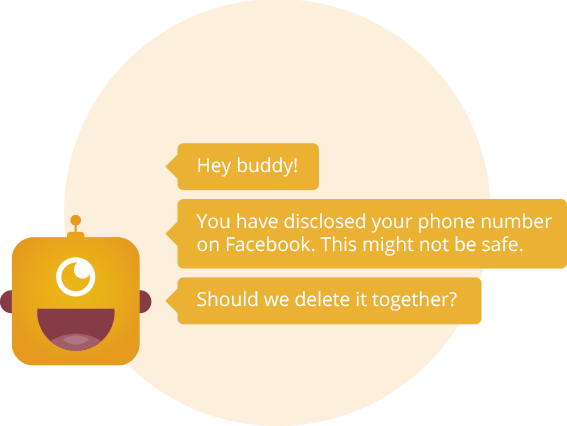
If a problem, such as a child trying to share an inappropriate selfie or their phone number, is detected the bot intervenes.
Highlighting the issue to the child Oyoty then explains to the child why the post is problematic.
Following this, the chatbot presents the child with a choice.
The child can agree with the bot and choose not to make the post, or they can select the “not sure” option.
This begins a conversation between the child and bot over why the content is problematic.
By engaging in this way children become more aware of what they are sharing online.
Oyoty is also an Educational Tool
Oyoty’s conversation content was developed with the help of UK based child psychologist Catherine Knibbs.
The aim was to ensure that the information was presented in a way that is appropriate for young children.
Consequently Oyoty’s interventions are structured to encourage the child to edit or delete the problematic content themselves.
Basically, the bot teaches children to self-moderate.
Oyoty is not just a safeguard.
Furthering its educational aims the bot also provides children with online privacy and safety content.
This information is presented in the form of videos, quizzes and colorful cartoons.
By engaging with this content children learn about internet safety, digital footprints, and more general topics such as self-image
Despite the freedom Oyoty gives the child, parents are still in control.
If the child refuses to engage with the chatbots moderation then Oyoty alerts the parents. Concerned parents are also able to monitor the child’s activity via an online dashboard.
This enables you to give your child a degree of freedom, whilst still remaining in control.
The Growing Role of Chatbots
Chatbots are increasingly being used throughout our daily lives.
Satya Nadella, the CEO of Microsoft said in 2016 that “bots are the new apps.”
As the technology improves and develops this is increasingly proving to be the case.
The most vital part of any chatbot is its ability to have a realistic conversation with a human.
Further development of NLP processes and systems will allow bots to become even more sophisticated.
Already much effort and expense have been put into designing a bot capable of sustaining a natural conversation.
Google, in their presentation of Duplex, announced that one day they believe chatbots will be able to make realistic phone calls.
For some, these developments are not entirely welcome.
The more intelligent technology becomes, the more information it requires.
This is often at the expense of our data privacy.
Despite these concerns, there is clearly a market for chatbots.
As technology develops, we will probably come to rely on them even more.
Images: Flickr Unsplash Pixabay Wiki & Others



















